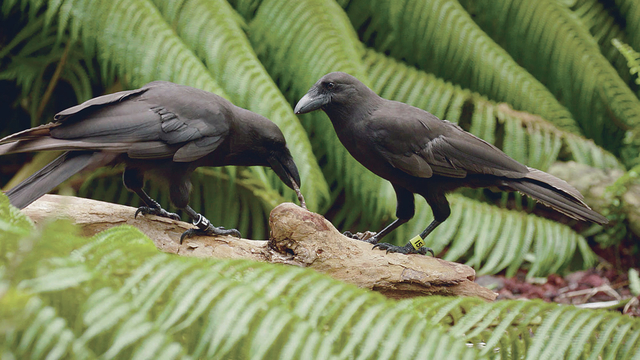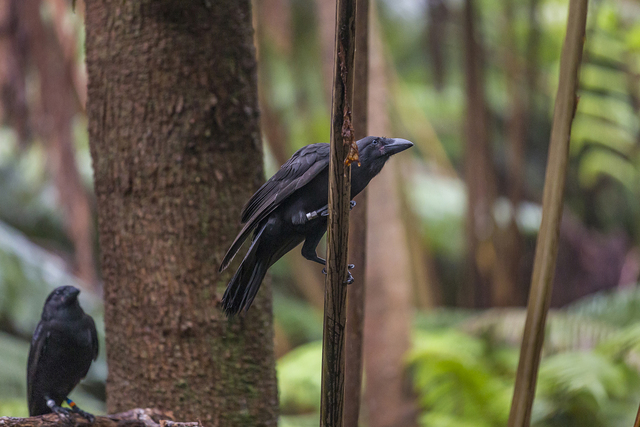KAILUA-KONA — It wasn’t the reintroduction hoped. ADVERTISING KAILUA-KONA — It wasn’t the reintroduction hoped. But biologists aren’t giving up their quest to reintroduce the Hawaiian crow to the wild despite a recent setback. Two young alala were moved back
KAILUA-KONA — It wasn’t the reintroduction hoped.
But biologists aren’t giving up their quest to reintroduce the Hawaiian crow to the wild despite a recent setback.
Two young alala were moved back into an aviary at the State of Hawaii’s Puu Makaala Natural Area Reserve last week, as conservationists work to overcome challenges faced by the birds during their reintroduction.
A group of five birds were released into the protected reserve on Dec. 14. Although the birds had been observed doing well and eating from feeders placed in the area, the State Department of Lands and Natural Resources said Monday that three birds were found dead over the last week.
The confirmed cause of the deaths is currently unknown but conservationists hope to gather information about what happened to the birds through necropsy examinations.
“Some level of mortality is to be expected when reintroducing a species back into the wild and we were prepared for that possibility,” John Vetter, a wildlife biologist with the DLRN’s Division of Forestry and Wildlife said. “The initial days of release are always the most difficult stage of any release program, and the level of uncertainty is also highest with the first release cohort.”
Vetter added that getting the remaining birds was a protective measure.
“We decided to recapture the remaining birds to ensure their safety while we await the results of the necropsies, so that we can learn, respond, and continue to strive for the long-term success of the alala,” he said.
Puu Makaala Natural Area Reserve is an area that conservationists have worked to preserve, protecting native plants and species, and it represents the type of habitat where alala originally lived before their numbers began to decline. The alala, or Hawaiian crow, has been extinct in the wild since 2002, preserved only at the Keauhou and Maui Bird Conservation Centers managed by San Diego Zoo Global’s Hawaii Endangered Bird Conservation Program.
“The loss of these three birds is difficult for the entire community, including the many people who have cared for these birds since their hatch and have worked steadfastly to prepare for their release,” said Bryce Masuda, conservation program manager of the Hawaii Endangered Bird Conservation Program. “Condolences for this loss have come from around the world.”




